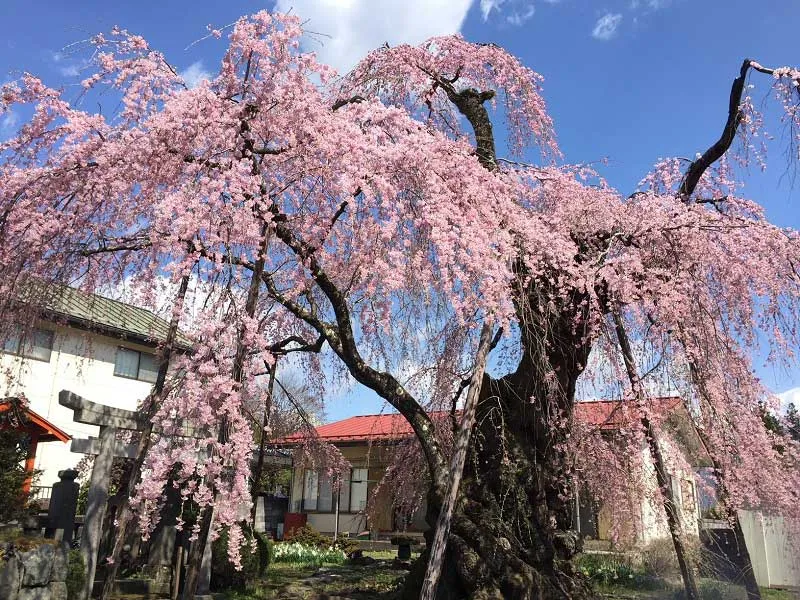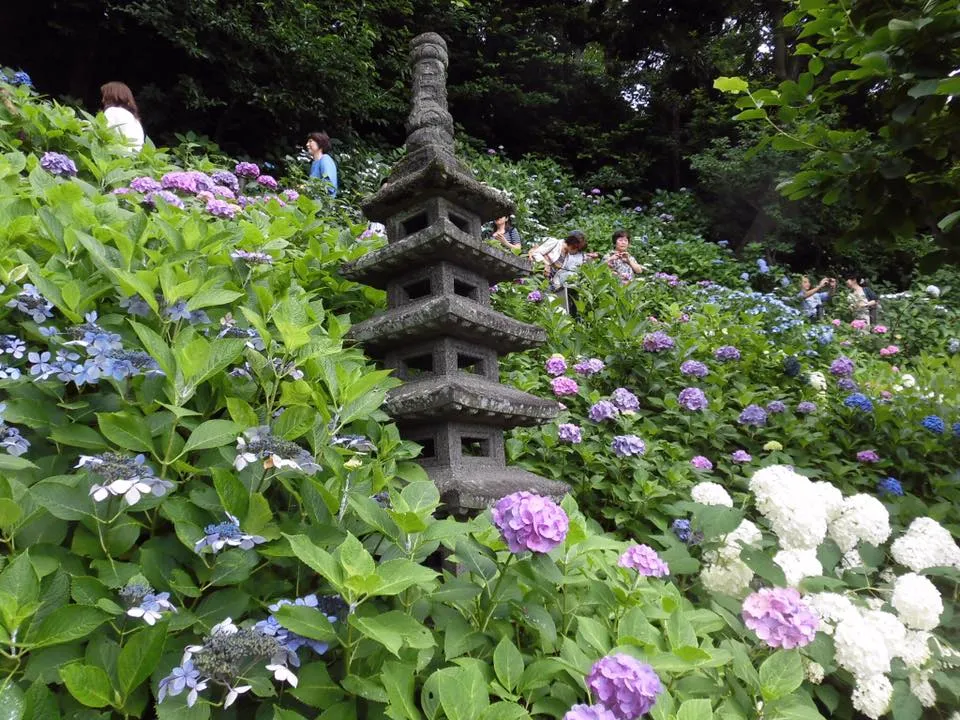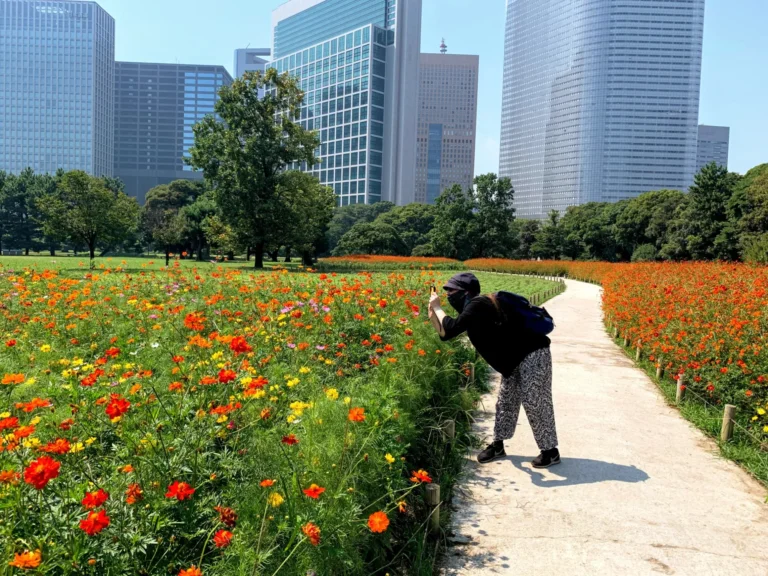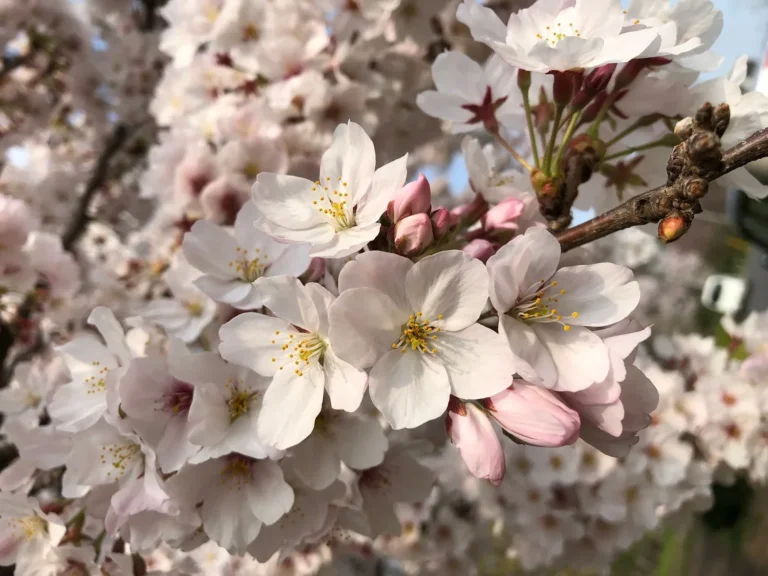There are many reasons to travel to Japan; wanting to discover its exotic culture that at the same time feels familiar, tasting the high-quality food and delicious cuisine, wanting to experience the birthplace of your favorite anime, manga, or game series, feeling the warm hospitality in an ambient ryokan, and enjoying Japan’s natural attractions such as Mt. Fuji, natural hot springs, beautiful views, great beaches, winter sports areas and of course bountiful seasonal flowers.



March and April’s cherry blossoms are already famous all over the world, but every season brings its own gorgeous scenery. No matter when you come to Japan, there are blooming flowers to enjoy. Let us give you an overview of which flowers are blooming when. Please note that the seasons correspond with the seasons in Honshu (Tokyo, Nagoya, Kyoto, Hiroshima) unless otherwise specified.
Spring Flowers in Japan

If you do your Japan tour in spring, you can expect the following flowers to be in full bloom:
- Cherry Blossoms (sakura); mid-late March. Please note that there are over 200 varieties of cherry trees, but the most common cherry tree that everyone is talking about when it is about ‘full bloom’ is the Somei Yoshino tree. You may, however, see other varieties bloom a bit earlier or later than the Somei Yoshino trees’ blossoms. The best place to see the cherry blossoms is along the Meguro River near Nakameguro station.
- Wisteria; late April-early May. The very best place to see blooming wisteria is the Ashikaga Flower Park in Tochigi. If you don’t have the chance to go there while in Tokyo, the next best place is the Kameido Tenjin Shrine.
- Azalea; mid April-mid May. While you will see blooming pink and white azalea flowers all over the city during the blooming period, the best place to see azalea is at the Nezu Shrine.
- Tulips; late April-early May. The very best place to see blooming tulips is at the Tonami Tulip Park in Toyama, which is a bit off the beaten path. The best place to see tulips near Tokyo is Sakura Furusato Hiroba in Chiba around one hour away from Tokyo.
- Creeping Phlox; April-May. These carpets of pink are best enjoyed together with Mt. Fuji in Kawaguchiko during the Shibazakura Festival.
- Nemophila; April-May. Waving baby-blue fields covered with these small flowers is a stunning sight. The Hitachi Seaside Park is the best spot for Nemophilia, but if you don’t have enough time in Tokyo, you can also catch them in the Showa Memorial Park in Tachikawa.
Summer Blooms in Japan

If you do your Japan tour in summer, you can expect the following flowers to be in full bloom:
- Hydrangea; mid June-mid July. These purple, blue or pink flowers are often planted in groups, making for beautifully decorated pathways during blooming season. Hakusan Jinja in Tokyo is a great place to see the Hydrangea, and if you don’t mind traveling an hour by train the Hasedera in Kamakura has a gorgeous path lined with flowers.
- Lotus; mid July-mid August. These flowers are associated with Buddhism and thus often found in ponds near temples. In Tokyo, the Shinobazu pond in Ueno Park has many lotus flowers, and again in Kamakura, you can find ponds full of lotus flowers on the grounds of the Tsurugaoka Hachimangu shrine.
- Iris; late May-July. Emperor Meiji’s favorite flower can be found in the inner garden of the Meiji Shrine, but the most famous display of iris flowers is in the Heian Jingu in Kyoto best visited in mid-June.
Fall Flowers in Japan

If you do your Japan tour in the fall, you can expect the following flowers to be in full bloom:
- Cosmos; late August-early October. These are the most colorful blooms in Japanese autumn, coming in pink, purple, red, orange, and white. A good place to see cosmos flowers in Japan is the Hamarikyu Gardens but if you really want to see them in their full glory with Mt. Fuji in the background you have to head to Hana no Miyako Park near Lake Yamanaka.
- Chrysanthemum; September-mid November. The national flower of Japan and the symbol of the Imperial Family can be found all over the country, and in Tokyo, the Shinjuku Gyoen is one of the best places to see blooming chrysanthemum.
- Fall Foliage; late November-early December. While strictly speaking this is not about flowers, it is one of the main reasons to come to Tokyo at the end of November. The leaves turn yellow in the last week of November and turn red in the first week of December. With the temperatures usually not at a freezing level yet, it is a very pleasant and photogenic time to travel to Japan. Some of the best spots in Tokyo to see the fall foliage are the Rikugien, Icho Namiki in the Meiji Jingu Gaien, and the Kyu Shiba Rikyu gardens.
Winter Flowers in Japan

If you do your Japan tour in winter, you can expect the following flowers to be in full bloom:
- Winter Peonies; late November-mid February. Coming in pinkish and purplish hues, these blooms bring some color to the colder season. In Tokyo, the peony garden in Ueno Park (near the Toshogu shrine) is a great place to see these flowers.
- Daffodils; December-January. These cold-loving flowers can be seen in small groups all over the city, but if you want to see a large blooming field full of them you have to head to Jogashima Park one hour away from Tokyo.
- Plum Blossom; late February-early March. The blooming of these soft pink to white flowers heralds the early beginnings of spring. While it is still too cold to enjoy a picnic under the trees, they are no less photogenic than the famous sakura cherry blossoms. In Tokyo, the Shinjuku Gyoen is one of the best places to see plum blossoms, but for the most amazing display of natural plum blossom beauty, you have to head to Mito for the Plum Blossom Festival.
Your Japan Tour
As experienced Japan experts, we can help you create your perfect Japan tour in any season. We will always make sure to include the season’s very best offerings such as gorgeous blooming flowers or foliage, seasonal foods, activities, and festivals. Check out our group tours and private tours, or contact us to start planning your unforgettable holiday to this fascinating country full of once-in-a-lifetime experiences, culture, history, nature, and delicious food!